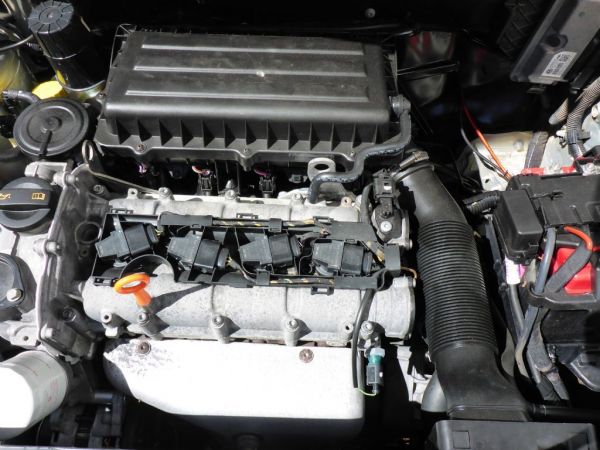Prevent operational issues with a well-tuned clp engine.
Prevent operational issues with a well-tuned clp engine.
Blog Article
Exactly How a Clp Engine Can Boost Effectiveness in Different Industries
The introduction of CLP engines notes a significant shift in operational efficiency across various sectors, driven by their capability to enhance fuel intake and reduce downtime. Industries such as production and logistics stand to acquire significantly from their durable design and constant power output, which guarantee to simplify operations and improve productivity. As organizations significantly prioritize sustainability together with performance, the role of CLP engines ends up being much more important. What remains to be seen is exactly how these improvements will shape the future landscape of commercial procedures and their influence on broader economic fads (clp engine).
Review of CLP Engines
CLP engines, or Continual Fluid Propellant engines, represent a significant development in propulsion technology, specifically for area applications. These engines make use of a constant feed system that allows for the continual expulsion of propellant, bring about improved efficiency and efficiency contrasted to conventional solid or hybrid propulsion systems. By keeping a continuous flow of fluid propellant, CLP engines can attain more specific thrust control, which is essential for steering spacecraft in different mission circumstances.
The style of CLP engines incorporates sophisticated materials and cutting-edge fuel monitoring systems. clp engine. This results in reduced weight and boosted dependability, vital variables for long-duration area missions. The continuous operation lessens the risk of burning instability, a common difficulty in standard rocket engines.

Benefits in Manufacturing
The production of Continuous Fluid Propellant (CLP) engines presents a number of notable benefits that boost both performance and cost-effectiveness. Among the main benefits is the streamlined manufacturing procedure, which minimizes the complexity connected with conventional propulsion systems. By utilizing liquid propellant, suppliers can attain higher precision in engine performance, leading to maximized power output and reduced waste.
In addition, CLP engines assist in a higher level of modularity, permitting much easier integration right into different manufacturing lines. This flexibility can dramatically reduce lead times and boost general functional versatility. Using CLP modern technology likewise tends to decrease the requirement for extensive upkeep because of less moving parts, which equates into lowered downtime and functional costs.

Applications in Logistics
Leveraging Continuous Liquid Propellant (CLP) engines in logistics provides substantial benefits in functional performance and integrity. These engines give a durable remedy for numerous transport demands, making it possible for the smooth motion of products across large distances. The fundamental style of CLP engines enables constant power output, which translates into smoother and more foreseeable transport timetables.
One of the essential applications of CLP engines in logistics is in go heavy-duty products transportation, where they can drive both ground and airborne cars. Their ability to maintain high efficiency under differing tons conditions guarantees that delivery timelines are met, thereby boosting client fulfillment. Furthermore, CLP engines can be integrated into automated logistics systems, helping with real-time monitoring and enhancing route preparation.
Additionally, the toughness of CLP engines decreases maintenance downtime, permitting logistics business to optimize their operational capabilities. This is specifically useful in warehousing operations, where performance in dealing with and transporting items is vital. As logistics remains to progress, the integration of CLP engines stands for a forward-thinking approach that not just improves performance yet also supports the industry's expanding needs for reliability and speed.
Effect on Power Performance
Exactly How do Continuous Fluid Propellant (CLP) engines boost power performance in transport? CLP engines utilize a regular circulation of liquid gas, optimizing combustion procedures and maintaining a steady drive result. This design lessens websites power losses connected with typical combustion engines, where fuel shipment can differ and lead to ineffectiveness.
The continual procedure of CLP engines allows for a much more reliable thermal cycle, causing higher particular impulse compared to conventional engines. clp engine. This equates to minimized gas intake for the same amount of work done, substantially decreasing functional costs across various transportation industries, consisting of air travel and maritime sectors
In addition, the capacity of CLP engines to keep optimal efficiency under differing lots problems reduces the demand for constant velocity and slowdown, better boosting gas performance. Boosted power performance not just adds to cost savings but also results in lower greenhouse gas emissions, aligning with international sustainability objectives.
Future Trends and Innovations
Arising improvements in Constant Liquid Propellant (CLP) engine technology promise to revolutionize the landscape of transport performance and sustainability. As markets pivot toward greener alternatives, CLP engines stand at the forefront, integrating innovative products and style approaches that enhance efficiency while decreasing ecological impact.
Among one of the most appealing trends is the fostering of hybrid systems that combine CLP Find Out More engines with renewable resource sources. This harmony can enhance fuel intake and minimize emissions, straightening with worldwide sustainability goals. In addition, improvements in computational fluid characteristics (CFD) are assisting in the design of even more aerodynamically effective engines, resulting in reduced drag and enhanced fuel performance.
Moreover, the growth of wise surveillance systems is set to boost operational performances. These systems take advantage of data analytics and IoT innovation to optimize engine performance in real-time, ensuring that the engines run within their most reliable specifications.
As research study remains to explore alternate propellant formulations-- such as biofuels and artificial fuels-- the future of CLP engines looks encouraging. By harnessing these technologies, markets can not just improve their effectiveness yet also contribute considerably to a cleaner, much more lasting future in transportation.
Verdict
In verdict, CLP engines represent a considerable innovation in performance across numerous markets. The integration of advanced products and fewer relocating components lessens upkeep needs, while alignment with sustainability goals settings CLP engines as a pivotal technology for the future.
Report this page